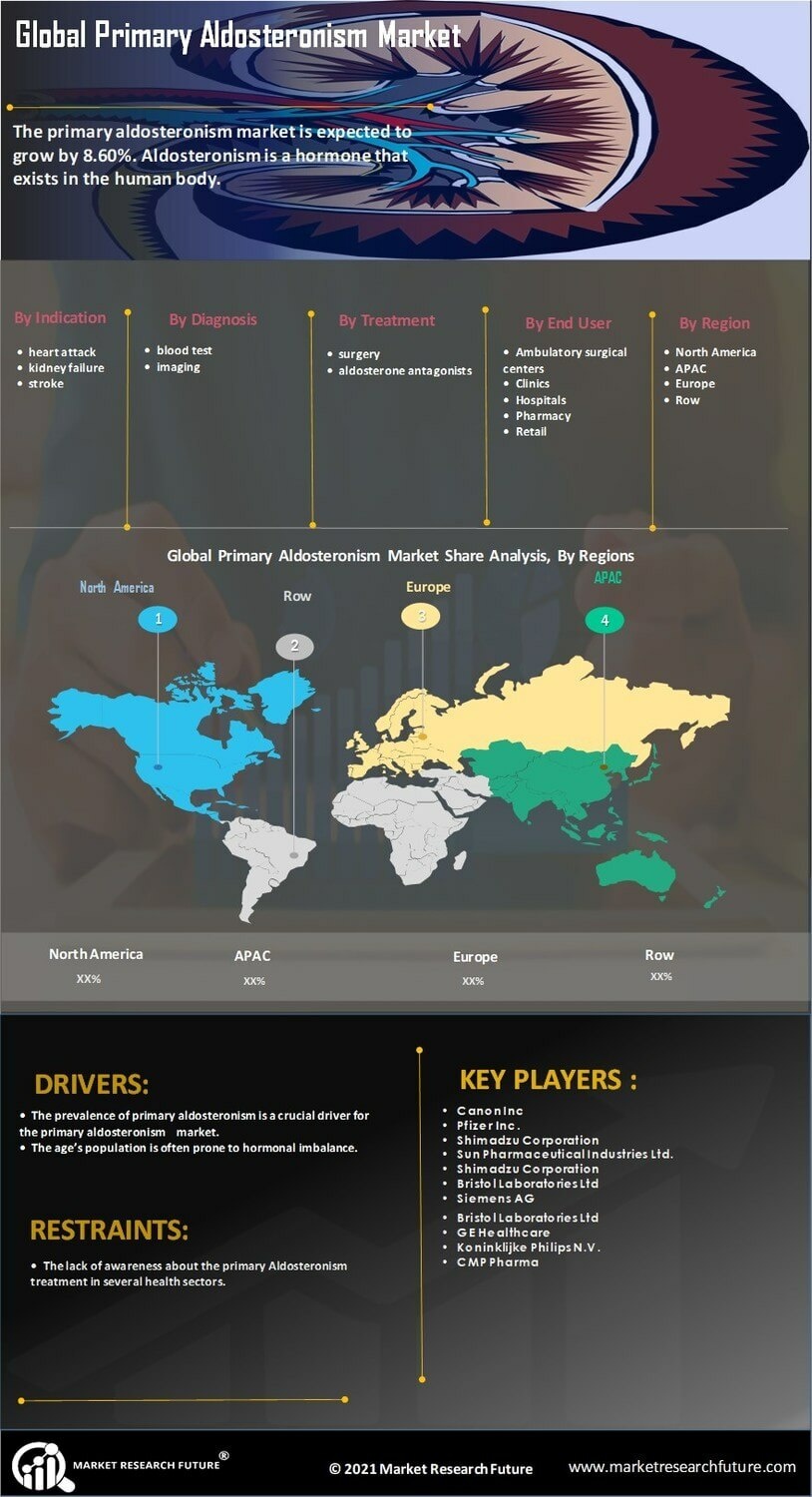Increasing Prevalence of Hypertension
The rising incidence of hypertension is a notable driver for the Primary Aldosteronism Market. Studies indicate that approximately 30% of patients with hypertension may have primary aldosteronism, which is often underdiagnosed. This condition leads to increased aldosterone production, resulting in elevated blood pressure. As awareness of hypertension grows, healthcare providers are more likely to screen for primary aldosteronism, thereby expanding the patient population. The market for diagnostic tools and treatment options is expected to grow as a result, with estimates suggesting a compound annual growth rate of around 5% over the next several years. This trend underscores the importance of addressing primary aldosteronism in the context of hypertension management.
Emerging Treatment Options and Guidelines
The emergence of new treatment options and updated clinical guidelines is shaping the Primary Aldosteronism Market. Recent advancements in pharmacotherapy, including the development of selective mineralocorticoid receptor antagonists, offer promising alternatives for patients. Additionally, updated guidelines from reputable medical organizations are emphasizing the importance of diagnosing and treating primary aldosteronism, which may lead to improved patient outcomes. As these guidelines become more widely adopted, healthcare providers are likely to increase their focus on this condition, resulting in a higher demand for both diagnostic and therapeutic solutions. The market is poised for growth as these new treatment paradigms gain traction in clinical practice.
Growing Investment in Research and Development
Investment in research and development is a critical driver for the Primary Aldosteronism Market. Pharmaceutical companies and research institutions are increasingly focusing on understanding the pathophysiology of primary aldosteronism, which may lead to the discovery of novel therapeutic agents. Recent studies have highlighted the potential of mineralocorticoid receptor antagonists and other innovative treatments, which could significantly alter the treatment landscape. The market is expected to benefit from these advancements, with R&D spending projected to increase by approximately 7% annually. This commitment to innovation not only enhances treatment options but also fosters collaboration between academia and industry, further propelling market growth.
Rising Awareness Among Healthcare Professionals
The growing awareness among healthcare professionals regarding primary aldosteronism is influencing the Primary Aldosteronism Market positively. Educational initiatives and training programs aimed at endocrinologists, cardiologists, and general practitioners are enhancing the understanding of this condition. As healthcare providers become more knowledgeable about the symptoms and implications of primary aldosteronism, they are more likely to consider it in differential diagnoses for hypertensive patients. This shift in clinical practice is expected to lead to increased screening and diagnosis rates, thereby expanding the market for treatment options. The emphasis on continuous medical education is likely to sustain this trend, ultimately benefiting patient care.
Technological Advancements in Diagnostic Methods
Technological innovations in diagnostic methods are propelling the Primary Aldosteronism Market forward. Enhanced imaging techniques, such as CT scans and MRI, along with improved biochemical assays, facilitate earlier and more accurate diagnosis of primary aldosteronism. The introduction of automated systems for hormone level testing has streamlined the diagnostic process, making it more efficient. As a result, healthcare providers are increasingly able to identify affected individuals, leading to timely interventions. The market for diagnostic tools is projected to witness substantial growth, with a focus on developing non-invasive and cost-effective solutions. This evolution in diagnostic capabilities is likely to enhance patient outcomes and drive market expansion.


















Leave a Comment